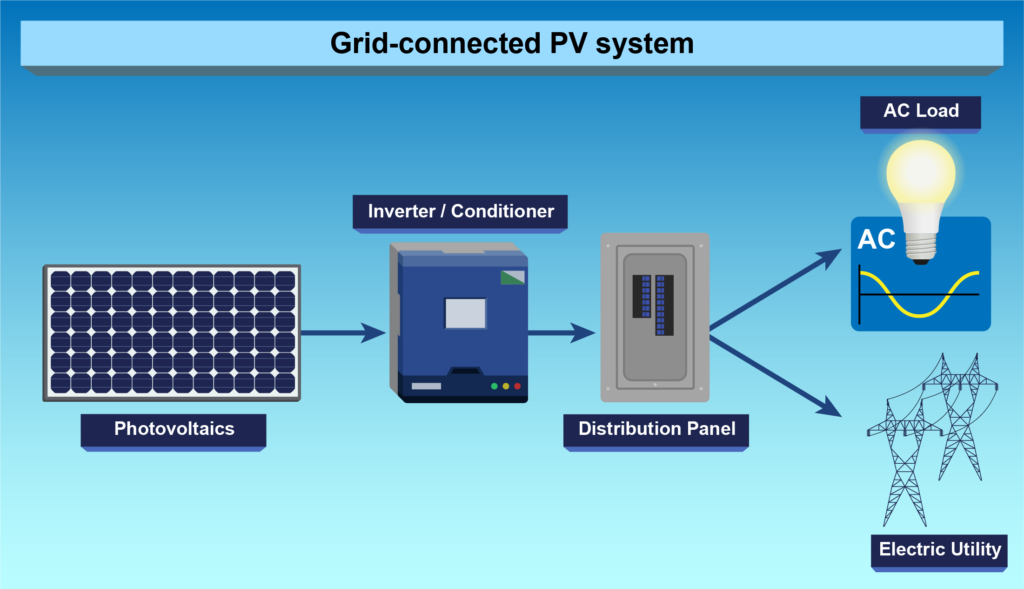In photovoltaic (PV) systems, batteries are typically connected in one of two main configurations: off-grid (stand-alone) or grid-tied with battery backup.
- Off-Grid (Stand-Alone) Systems: In off-grid PV systems, batteries are essential for storing excess electricity generated by solar panels during the day for use during times when the sun is not shining (e.g., at night or during cloudy weather). The typical connection scheme for batteries in off-grid systems involves connecting them in series and/or parallel configurations to achieve the desired voltage and capacity.
- Series Connection: Connecting batteries in series increases the total voltage while keeping the capacity constant. For example, if you have two 12-volt batteries connected in series, the total voltage will be 24 volts.
- Parallel Connection: Connecting batteries in parallel increases the total capacity (ampere-hour rating) while keeping the voltage constant. For example, if you have two 12-volt batteries connected in parallel, the total capacity will be doubled while maintaining a voltage of 12 volts.
- Grid-Tied Systems with Battery Backup: In grid-tied PV systems with battery backup, batteries serve as a backup power source during grid outages. These systems are connected to the utility grid but also have a battery storage component. In this configuration, batteries are typically connected to an inverter that manages the flow of electricity between the solar panels, batteries, and the grid.
- Charge Controller: A charge controller is used to regulate the charging and discharging of batteries in both off-grid and grid-tied systems with battery backup. It prevents overcharging and deep discharging of batteries, which can prolong their lifespan.
- Inverter: In grid-tied systems with battery backup, the inverter plays a crucial role in managing the flow of electricity. It converts the direct current (DC) generated by the solar panels and batteries into alternating current (AC) suitable for use in the home or for feeding into the grid.
Both configurations have their advantages and disadvantages, and the choice depends on factors such as energy requirements, budget, and location. Off-grid systems provide energy independence but require larger battery banks, while grid-tied systems with battery backup offer backup power but may be more complex and expensive.


